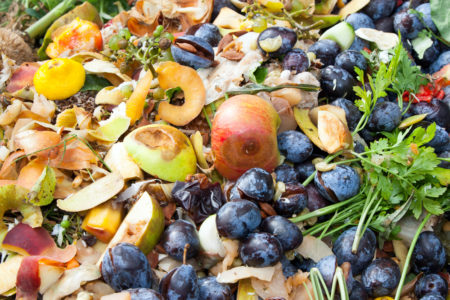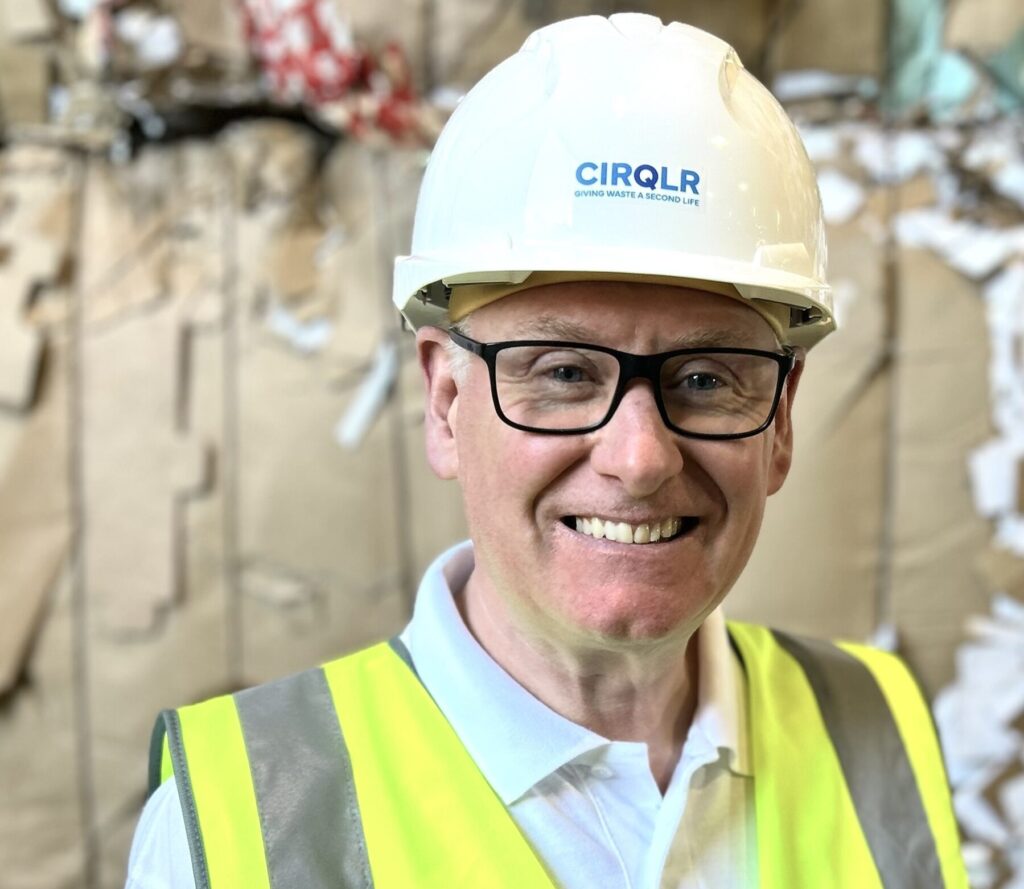Biowastes and similar biodegradable wastes are finally beginning to have their wider benefits recognised at a policy level.
These benefits, particularly those around carbon, can only be fully realised through their safe recycling back to soil. The fundamental question of how to collect has been answered – weekly separate collection – but the devil always lies in the detail and the questions now are much more nuanced. Their answers range from an understanding of systemic needs and benefits to ones of blinkered rhetoric which some might say deliberately miss the point. But what is that point exactly?

Resource strategy
Food and garden waste will become mandatory waste streams in England post 2023, but there is some concern that not enough focus is being put on the methodologies to ensure this biowaste is separately collected and treated. Above all, there is concern that the current practices that create high plastic contamination rates, which in the best case lead to increase processing costs but more often to low quality and polluting outputs, will continue and indeed rise. As food waste arisings entering treatment increase four or five fold, getting food waste collection and treatment right is vitally important to the whole resource strategy.
Compostables
Moreover, where compostable materials are concerned, we need to ensure these are used in the right applications and bring value to the system, avoiding cross-contamination and consumer confusion. Producers of compostable products already pay into PRN and future EPR schemes, but their “investments” are diverted away from their true destiny. These producers range from large multi-nationals to UK-based SMEs, and they all keen to have those payments contributing towards enhancing a system in which biowastes in general are valorised.
Compostables are often described as a carte blanche substitution to single use plastic packaging. This is looking down the telescope the wrong way. Compostables can indeed substitute plastic packaging, but only have sense when they can themselves drive food waste to composting and AD. This is our largest waste stream, the largest emitter of GHG in the waste sector, and one that requires significant investment in collection and treatment to get right.
Getting food waste into treatment properly means:
1. Simple to use and uniform across the country, to enable nationwide communications programmes and reduce procurement costs for councils;
2. With the least smell and fuss for consumers, so householders comply with the requirement to separately collect;
3. As much as possible. This means intercepting in the future as much as 100 kilos per inhabitant annually (two kilos a week) while working on food waste reduction targets too;
4. As cleanly as possible, so it can make gas and compost or digestate. This means with the least contamination possible, avoiding blockages and leaks of contaminants to soil;
5. With as much financial return as possible for the operators. In turn, this means least amount of contaminating waste to strip out and send to disposal, and the highest yields of gas and biofertilisers and composts possible;
6. With the best quality outputs possible so we can ensure a value driven marketplace for the compost and digestate produced.
Only by collecting biowastes with compostables can we ensure these objectives are reached. Plastics do not compost nor produce gas, and in organics are contaminants that should be collected for plastic recycling, not organics recycling. Compostable packaging, bin liners, carrier bags, bags, coffee pods, teabags, labels on fruit/vegetables, fruit and vegetable bags, magazine wraps and catering tableware can all be materials used to convey food waste to treatment where the packaging itself can biodegrade with the contents. This is the use of compostables – to enhance the production of biogas and biofertilisers and the reduction of contamination, and reduce plastic pollution in doing so.
Anaerobic digestion
We don’t want compostables contaminating plastics, although the statistical possibility is extremely low; similarly we don’t want plastics contaminating organics, as it does now – as much as 20% of all inputs to AD and compost are plastic packaging. So we need separate and clean streams. When there is cross contamination, technologies can sort it out, like the new plant opened by Jayplas shows.

AD operators attempt to strip out all packaging and indeed compostables too. But currently AD in the UK treats very only small amounts of household food waste – about 20% of what is coming along post 2023. The investments needed to treat those millions of extra tons can help the sector upgrade technologies and treat materials more efficiently, as many European and modern UK plants have demonstrated. This will also require an increase in scale of plants; today they are very small compared to what is needed.
If AD gets its head around recovering materials as well as biowaste, it is a win-win for the industry, cutting plastic waste, cutting disposal costs, improving yields, economic and environmental performance and producing new outputs like compost. To do this we need all food waste collected with one bag, compostable, so it can go either to IVC or AD. Counter-intuitively, this gives councils flexibility when collecting their food wastes – they are no longer tied to a specific treatment if all treatment accepts compostable bags.
Italy
The circularity of compostables is to be found in the circularity of food waste – as a vehicle to drive those biowastes to treatment cleanly, without plastic contamination. Has this been proven?
Take a look at the Italian case. Italy collects and treats two thirds of all the food waste collected and treated in the EU, including the UK and Norway. It has therefore a unique and exceptionally successful record. The Italians have plants treating 700,000, 550,000, 300,000 tons a year each – one plant in Milan treats more than all of England. Over 6 million tons of food waste is treated this year in Italy.
They banned the use of plastics in biowaste collections in 2010 and now have contamination rates of 1.5% plastics.

Compostable plastics are used for the collections but in many other uses such as fruit and vegetable bags, carrier bags, coffee pods, catering ware and so on. Data from their composting association shows that 80% of all the compostables put onto the market (around 120,000 tons) are actually effectively composted.
This is a remarkable piece of data because it shows that compostables fulfil their role – getting biowaste into treatment cleanly. As a result, the plants produce high quality compost outputs that sell on the market at prices UK composters dream of: €100 a ton and more. Above all, Italian users can be confident compost is beneficial. Today less than half of all UK AD and compost plants are PAS100/110 certified. Their outputs are classified as waste. This tells you a lot about what we are spreading to soil.
The amount of bioplastic used in Italy represents around 2% of the biowaste those materials collect and convey back to treatment. The proportion is clear – 1:50. Growth of food waste intercepted is matched hand-in-hand by the growth of bioplastics as collection tools.
Italy is ahead of all EU countries and the UK on food waste. But we are all going in that direction as post 2023 mandates come into force. What is the opportunity for us?
Questions for policymakers
The UK has the opportunity right now to realise this same potential as we go from small to mainstream food waste collections. The questions policymakers and the wider stakeholder community have to answer as food waste collections are rolled out are:
· Do we want to promote the incineration of plastic waste and the food stuck to it, as we are currently doing?
· Will we increase the transfers of financial resources from organic waste collection to incineration of the contaminants as now?
· Will the UK allow biowaste plants to be overcome by plastic as currently is happening?
· Will the UK allow biowaste plants to become terminals for what is essentially mixed waste as is currently happening?
· Will the UK permit the production of composts and digestate that contain so much plastics that farmers refuse to accept them, as is already happening?
If the UK is to answer ‘no’ to those questions, we must take the opportunity of ensuring that food waste collections are clean, can be treated, and produce quality outputs that have value for our soils. We need to establish a trajectory of quality – weekly separate collection – quality inputs, processes and outputs.
As Italy has shown, this requires simple legislation mandating collections with compostable packaging, a little enforcement to ensure councils do this, education to citizens to ensure compliance and an upgraded, modernised organics industry working together to handle new volumes and produce valuable products.
Appropriate deployment
In summary, when considered systemically and deployed appropriately, compostable products and packaging plays the role of:
1. A biolubricant for biowaste collections and treatment;
2. A reduction instrument, reducing plastic waste entering biowaste streams;
3. A plastic waste prevention instrument, substituting plastic where it does not fit;
4. A zero waste option, ensuring biowaste no longer goes to incineration but back to soil;
5. An instrument to drive the circular bioeconomy and protect our soils long term.
For the full paper related to this article, please visit the BBIA website reports page: www.bbia.org.uk/reports






Subscribe for free